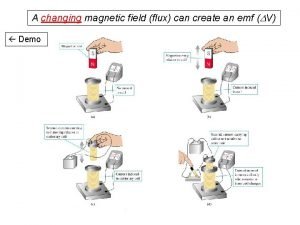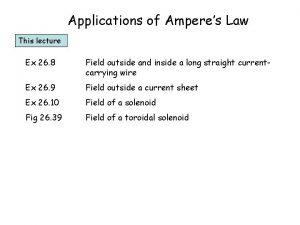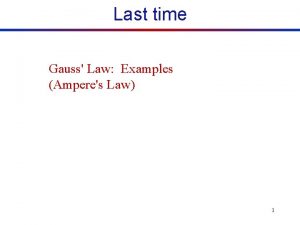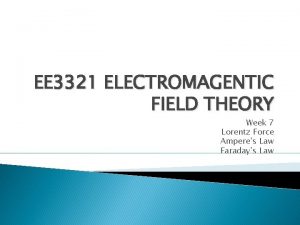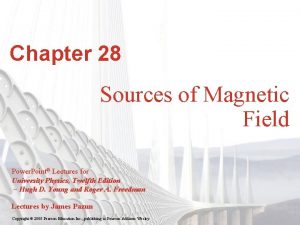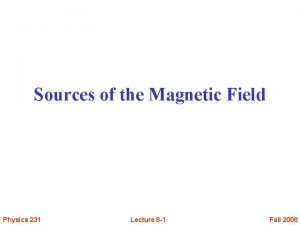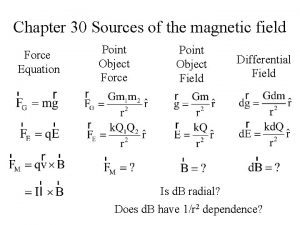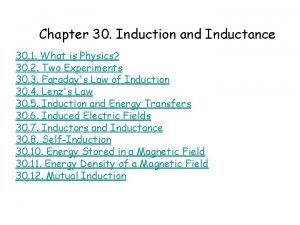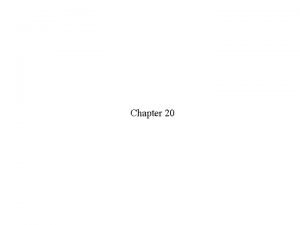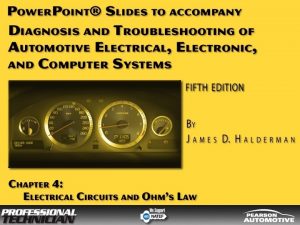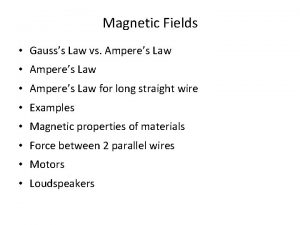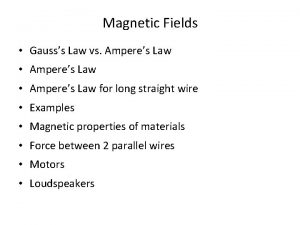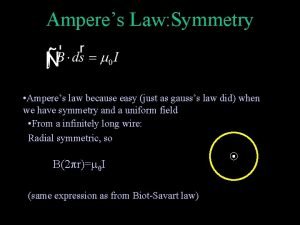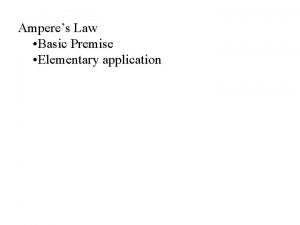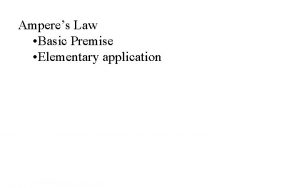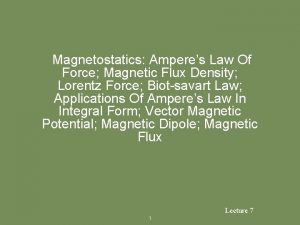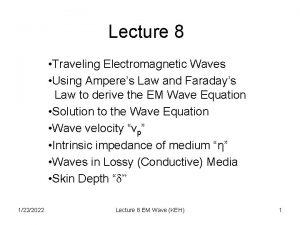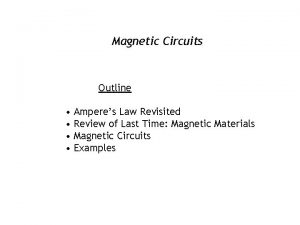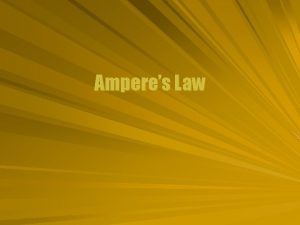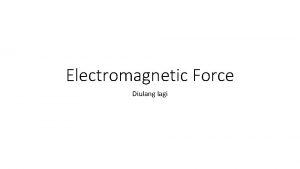Magnetic Force on a Conductor Amperes Law Electromagnetic

![FM on a Conductor in a Magnetic field: n The magnetic force FM [N] FM on a Conductor in a Magnetic field: n The magnetic force FM [N]](https://slidetodoc.com/presentation_image_h2/9b839d9d0670f3546a378348c9005382/image-2.jpg)











- Slides: 13

Magnetic Force on a Conductor, Ampere’s Law & Electromagnetic Induction Textbook: 8. 3, 8. 4, 8. 5 Homework: pg. 407 #1 – 5 pg. 414 #1 - 4, 6, 9 pg. 419 #1, 3, 8
![FM on a Conductor in a Magnetic field n The magnetic force FM N FM on a Conductor in a Magnetic field: n The magnetic force FM [N]](https://slidetodoc.com/presentation_image_h2/9b839d9d0670f3546a378348c9005382/image-2.jpg)
FM on a Conductor in a Magnetic field: n The magnetic force FM [N] on a conductor of length l [m] carrying a current I [A] through a magnetic field B [T] is: is the angle between I and B ¨ RHR: Thumb points in direction of +ve I, fingers in direction of B, palm pushes in direction of FM ¨ Where

Review - around a conductor: n Magnetic field strength is proportional to current: n Magnetic field strength is inversely proportional to radius: n Therefore:

n Ampère’s Law Along any closed path through a magnetic field, the sum of the products of the scalar component of B, parallel to the path segment with the length of the segment, is directly proportional to the net electric current passing through the area enclosed by the path.

Ampere’s Law n n Take a closed path in B Add up B|| l around path Sum equals 0 I Permeability of free space 0 = 4 x 10 -7 Tm/A

FM between TWO CONDUCTORS

n Two parallel straight conductors 5. 0 m long and 12 cm apart are to have equal currents. The force each conductor experiences from the other is not to exceed 2. 0 x 10 -2 N. What is the maximum possible current in each conductor?

Applications n Coaxial Cable (see pg. 410) ¨ Electric Shielding ¨ Magnetic Shielding n Definition of Ampere/Coulomb ¨A current of 1 A in parallel wires 1 m apart in a vacuum creates a force of 2 x 10 -7 N per meter ¨ 1 C is the charge transported by 1 A in 1 s

Maglev Trains n n n Opposite poles levitate train Guide magnets change polarity to push and pull train Very little friction leads to very high speeds (World Record is 581 km/h)

Electromagnetic Induction A changing electric field (i. e. a current) induces a magnetic field n A changing magnetic field induces a current in nearby conductors n Examples: n ¨ Electric Generators ¨ Transformers ¨ Guitar Pickups

Lenz’s Law n The direction of an induced current is such that it opposes the changing magnetic field that created it

Magnitude of the magnetic field strength in the core of the solenoid n n B is the magnitude of the magnetic field strength in the core of the solenoid, in teslas; I is the current flowing through the coil, in amperes; L is the length of the solenoid, in metres; N is the number of turns on the coil.

Pg 418 # 3 n Two magnets are dropped through thin metal rings (Figure 11). One of the rings has a small gap. n (a) Will both magnets experience a retarding force? Explain your reasoning n (b) Will your answers change if the rings are replaced with long cylinders, one with a long thin gap down one side?
 Flux magnetic
Flux magnetic Ampere's law solenoid
Ampere's law solenoid Ampere's law examples
Ampere's law examples Amperes law
Amperes law Divergence in spherical coordinates example
Divergence in spherical coordinates example F=i(lxb)
F=i(lxb) Conductor in a magnetic field
Conductor in a magnetic field Magnetic field unit
Magnetic field unit Magnetic field in wire formula
Magnetic field in wire formula Induced current
Induced current A conducting loop is halfway into a magnetic field
A conducting loop is halfway into a magnetic field If 200 amperes flow from the positive terminal
If 200 amperes flow from the positive terminal Magnetic permeability of materials
Magnetic permeability of materials Magnetic flux formula with current
Magnetic flux formula with current
